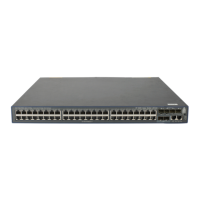257
Task Command Remarks
Display the contents or request
status of a certificate.
display pki certificate { { ca | local }
domain domain-name |
request-status } [ | { begin |
exclude | include }
regular-expression ]
Available in any view
Display CRLs.
display pki crl domain
domain-name [ | { begin | exclude
| include } regular-expression ]
Available in any view
Display information about
certificate attribute groups.
display pki certificate
attribute-group { group-name |
all } [ | { begin | exclude |
include } regular-expression ]
Available in any view
Display information about
certificate attribute access control
policies.
display pki certificate
access-control-policy { policy-name
| all } [ | { begin | exclude |
include } regular-expression ]
Available in any view
PKI configuration examples
Unless otherwise noted, devices in the configuration examples are operating in non-FIPS mode.
When the CA uses Windows Server, the SCEP add-on is required, and you must use the certificate
request from ra command to specify that the entity request a certificate from an RA.
When the CA uses RSA Keon, the SCEP add-on is not required, and you must use the certificate request
from ca command to specify that the entity request a certificate from a CA.
Certificate request from an RSA Keon CA server
Network requirements
The switch submits a local certificate request to the CA server. The switch acquires the CRLs for certificate
verification.
Figure 81 Network diagram
Configuring the CA server
1. Create a CA server named myca:
In this example, you need to configure these basic attributes on the CA server at first:
{ Nickname—Name of the trusted CA.
{ Subject DN—DN information of the CA, including the Common Name (CN), Organization
Unit (OU), Organization (O), and Country (C).
Use the default values for the other attributes.

